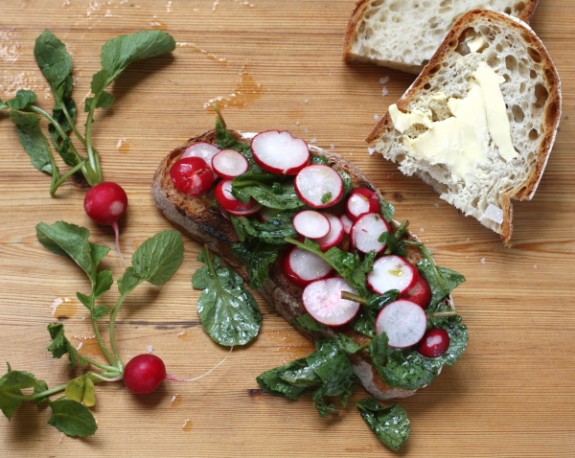
Photo from: elevenfortyfive.com
Every penny counts when you’re trying to cover the bills, fill up the gas tank, pay down credit card debt and still have a little coin to invest in a fancy meal now and then.
So, in the effort to save some cash I’m cutting a lot of corners. I cook at home for almost every meal. I’m the Iron Chef of leftovers. I stay away from gourmet delis, wine shops, cooking supply stores, bookstores and fancy restaurant row. I skip the coffee shop and drink one (free!) cappuccino while I’m working at the restaurant. I walk to most my errands.
And, in another foodie, cash-preservation step, I’m not buying ANY cookbooks. Instead, I’m raiding the local Los Angeles Public library for every great cookbook they have.
I love the library
So before you run over to your local library, just keep one thing in mind: If you live in Los Angeles, don’t even try to take out anything by Alice Waters or Thomas Keller for the next month or so. I’ve got all of the Keller and Waters’ cookbooks. According to my library account status, I’ve got these babies for another three weeks.
Thanks to the ticking clock of the library book due dates, I’m extremely motivated to read through all of my borrowed cookbooks. For the first time really, I’m truly reading cookbooks. I’m skimming the pictures and studying the elegant essays and personal pieces these two great chefs offer in all of their books. Quite honestly, reading cookbooks feels like going to cooking school.
Boy, have I been learning a lot.
 First off, Alice Waters’ Chez Panisse Fruit is AMAZING. If you shop at farmer’s markets or participate in a CSA, you should really get this book. Chez Panisse Fruit not only offers hundreds of amazing and sometimes very simple recipes, Waters takes the time to discuss the glories of every fruit featured in the book with her well researched introductory essays.
First off, Alice Waters’ Chez Panisse Fruit is AMAZING. If you shop at farmer’s markets or participate in a CSA, you should really get this book. Chez Panisse Fruit not only offers hundreds of amazing and sometimes very simple recipes, Waters takes the time to discuss the glories of every fruit featured in the book with her well researched introductory essays.
An Alice Waters Fun Fact:
* Did you know that apricot pits can be used for baking needs?
According to Alice in Chez Panisse Fruit, inside the pit is a kernel, called the noyaux. The noyaux can be used to flavor amaretti cookies, custards, ice cream and liquor. To remove the noyaux, simply roast the pit at 350 F for 10 to 15 minutes and crack them open. It should be noted that the noyaux has a toxic enzyme that is destroyed by heat: so be sure to roast the center kernel again for a few minutes to make sure it is safe to consume.
I’ve really enjoyed reading and cooking from the Chez Panisse Café Cookbook a great deal. Alice’s recipes feature the most casual dishes of Chez Panisse and allow the home chef easy access to cooking in the style of one of America’s most respected and ground breaking Cal-French restaurants.
If you want an example of a great and easy to make dish, just check out my previous post about Prosciutto wrapped scallops.
 from ruhlman.com
from ruhlman.com
After hearing that Thomas Keller would be returning to Los Angeles to open a new Bouchon, I got very excited to start reading up on this French Laundry chef. His books are beautiful to look at and have plenty of personal stories to bring the reader into his thought processes behind all of his restaurants.
Thomas Keller’s Bouchon is a beautifully photographed book that’s chocked full of wonderful essays and insights into French bistro fare. Though author Michael Ruhlman’s writing is incredibly tight, the size and weight of Bouchon makes it better suited as a culinary, coffee table book than a functional cookbook. That being said, the recipes in this book are not as daunting as the haute cuisine of the French Laundry. The bistro fare, though it may seem simple, requires thoughtful and specific recipes. The authors and chefs come together to describe the steps of preparation with research to back it up. Reading Bouchon gave me the impression that maybe there could be a handful of dishes I could make without making a fool of myself.
A Thomas Keller Fun Fact:
* Thomas Keller’s first real teacher in French cooking was a Frenchman named Roland Henin. It was in Henin’s Rhode Island restaurant that Keller learned one of his first, and memorable cooking lessons: how to dress a salad.
According to Keller:
He would salt it, then put on the oil to coat the lettuce and protect it from the acid, and then he would add the acid. He would never combine the two then pour them on: vinegar was the seasoning element. What made watching him exciting was the anticipated joy of eating that salad, the richness of the oil, the sparks of vinegar that would come through.
Cooking from a library book may be a scary idea for anyone like me that has a difficult time keeping prepped ingredients from ruining one’s own personal cookbook pages. I do my best to keep these borrowed books clean when I take them into the kitchen with me. Though I’ve managed to splatter just an eensty-teeny bit of oil on one page of Alice Waters’ Café Cookbook, I notice I’m not alone in the occasional spots and smudges on the pages. Clearly, I’m not the only one trying to save some coin for a really great meal.




